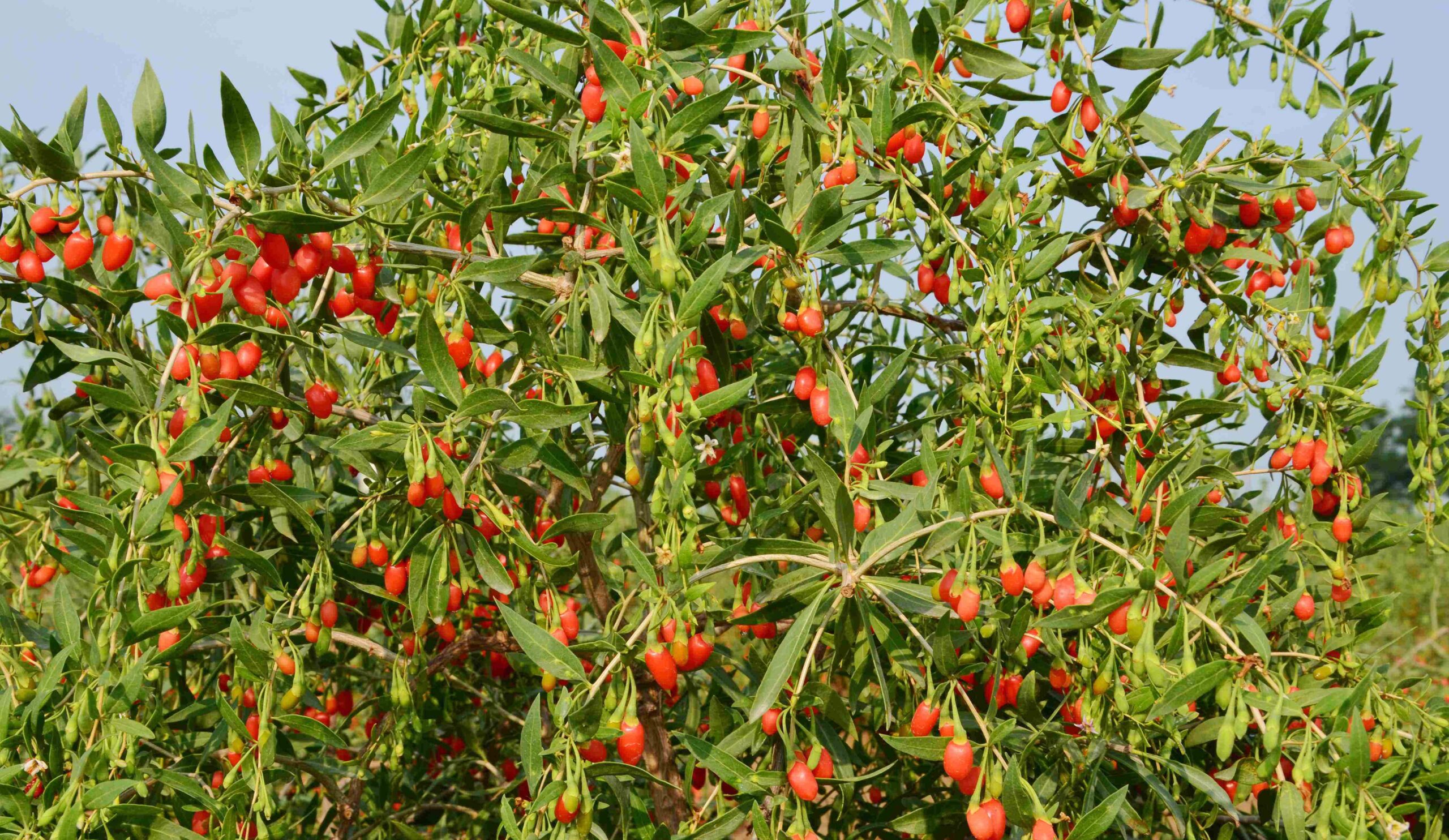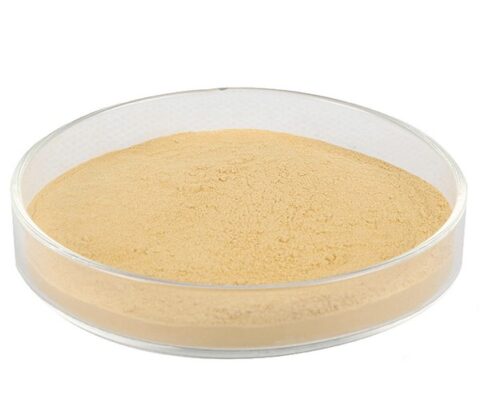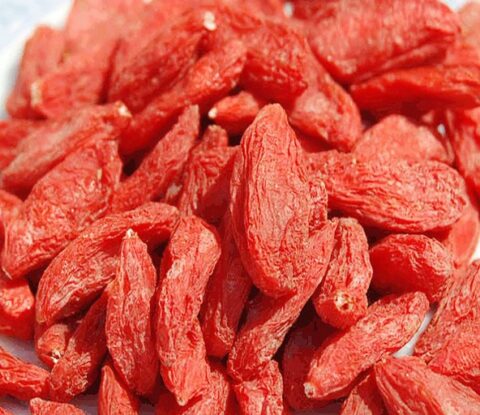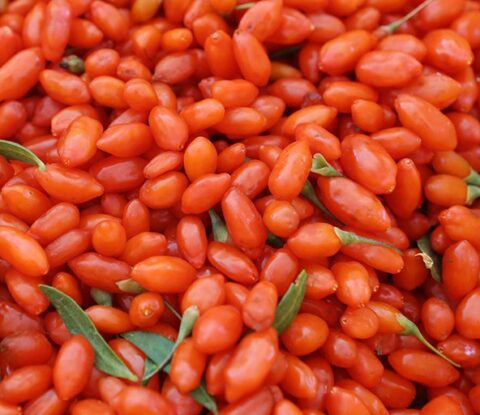
Goji Berry Extract Powder(Gou Qi Zi) 10:1, 20:1, 50:1 TLC, Polysacchrides 30%, 50% UV
Goji berry extract has a nourishing and sweet texture, which is gentle yet slightly warm. They are beneficial for the liver, kidney, and lung meridians. Skilled in nourishing the liver and kidneys and improving eyesight, treating liver and kidney yin deficiency and visual impairment; Can nourish lung yin and relieve cough, treat cough caused by yin deficiency。
Goji Berry Extract Powder(Gou Qi Zi) 10:1, 20:1, 50:1 TLC, Polysacchrides 30%, 50% UV
【Other names】: Gou Qi Zi, Fructus Lycii, Qou Qi, Wolfberry Fruit, Gou Qi,Chinese wolfberry, Matrimony vine, Lycium chinensis, Chinese wolf berry
【Botanical source】: Lycium barbarum L.
【Part used】: The dried and ripe fruit of Lycium barbarum L., a plant in the Solanaceae family. Harvest the fruits in summer and autumn when they turn red, dry them with hot air, and remove the stems. Or air until the skin is wrinkled, sun dry, and remove the stem.
【Specification】: 10:1, 20:1, 50:1 TLC, Polysacchrides 30%, 50% UV
【Appearance】: Brownish yellow powder
【Particle size】: 95% pass 80 mesh size

Goji Berry Extract Powder(Gou Qi Zi) Production Flowchart
Goji berry raw materials – natural air drying–Coarse powder(40 mesh) -Low temperature water extraction – 1st Reflux Extraction(10 times water,2 Hrs) – 2nd Reflux Extraction8 times water,1.5 Hrs) – 3rd Reflux Extraction(6 times water,1 Hrs) – Extraction Solution-combine&Filtrate-Concentrate-Extractum-spray drying – screening – packaging – detection of physical and chemical indicators – warehousing
Specification Sheet of Goji Berry Extract Powder(Gou Qi Zi)
| Product name: | Goji berry extract | ||
| Specification: | 10:1 TLC | ||
| Part used: | Dried fruit of Lycium barbarum L. | ||
| Solvent used: | Hot water | ||
| Process: | Raw materials crushed, extracted,concentrated and spray-dried to powder | ||
| Non GMO according to regulation (EC) 1829/2003 and 1830/2003 or United States requirements. Non allergen according to Directive 2007/68 amending Annex IIIa to Directive 2000/13/EC and US Food allergen labelling and consumer protection act 2004. | |||
| Heavy Metals: | |||
| Lead: | NMT 3ppm | Cadmium: | NMT 1ppm |
| Arsenic: | NMT 2ppm | Mercury: | NMT 1ppm |
| Residual solvents: | Comply to USP | ||
| Pesticides residues: | Conform to Regulation USP<561> | ||
| Microbiology: | |||
| Total plate count: | 10000cfu/g Max | Yeasts and molds: | 1000cfu/g Max |
| E.coli: | Not detected in (g)10 | Salmonella spp.: | Not detected in (g)25 |
| Staphylococcus aureus: | Not detected in (g)10 | Clostridium spp.: | Not Present in 0.1 g of food |
| Organoleptic quality | Method | Specifications | |
| Aspect: | Visual : ( CQ-MO-148) | Powder | |
| Color: | Visual : ( CQ-MO-148) | Brown | |
| Flavor: | Sensory: (CQ-MO-148) | Characteristic | |
| Analytical quality | Method | Specifications | |
| Identification: | TLC | Conform | |
| Loss on drying: | USP <731> | < 10% | |
| Bulk density: | USP <616> Method I | 40 – 60 g/100mL | |
| Particle size: | Analytical sieving || USP <786> | 100% through 80meshes | |
| Packaging suitable for foodstuff. | |||
Extended Reading
Goji Berry (Gou Qi Zi) Function and Efficacy Recorded in TCM
Goji berry is used for deficiency of labor and essence, lower back and knee pain, dizziness and tinnitus, impotence and nocturnal emissions, internal heat and thirst, blood deficiency and yellowing, and unclear vision.
1. For the treatment of liver and kidney deficiency, such as fatigue, emaciation, and soreness in the waist and knees, it can be brewed with ripe Rehmannia, Huangjing, lilies, and other alcoholic beverages.
2. For the treatment of liver and kidney yin deficiency, low back and knee pain due to insufficient essence and blood, dizziness and tinnitus, erectile dysfunction and nocturnal emissions, internal heat and thirst quenching, blood deficiency and yellowing, and unclear vision, it can be taken with ointment alone.
3. It is often used with chrysanthemum, prepared rehmannia root, and cornus officinalis to treat dim eyes, blurred vision, or dry eyes due to liver and kidney yin deficiency.
4. It can be used to treat kidney deficiency, lower back pain, residual urine, nocturnal emission, premature ejaculation, impotence, and infertility, and can be equivalent to dodder seed, raspberry, and Schisandra chinensis.
The Medicinal Value of Goji Berry (Gou Qi Zi)
Goji berries have a sweet and smooth taste, and have the functions of nourishing the liver, tonifying the kidneys, and benefiting the eyesight. According to physical and chemical analysis, it contains betaine, physalein, cryptoxanthin, as well as carotene (vitamin A), thiamine (vitamin B1), riboflavin (vitamin B2), ascorbic acid (vitamin C), as well as niacin, calcium, phosphorus, iron, and other nutrients that the human body needs. Therefore, it is consumed as a nourishing medicine. In addition, the traditional Chinese medicine for root bark, also known as Rehmannia glutinosa, is used for medicinal purposes.
Goji berry polysaccharides: Lycium barbarum polysaccharides are water-soluble polysaccharides and the most important active ingredient in Lycium barbarum, with a relative molecular weight of 68-200, making them a hot research topic both domestically and internationally. Among them, the research on the immune regulation and anti-tumor effects of goji berry polysaccharides is the most extensive. Many studies have shown that goji berry polysaccharides have effects such as promoting immunity, anti-aging, anti-tumor, clearing free radicals, anti fatigue, anti radiation, protecting liver, protecting and improving reproductive function.
Betaine: Chemical name 1-carboxy-N, N, N-trimethylaminoethyl lactone, structurally similar to amino acids, belonging to the quaternary amine alkaloid class. Betaine is one of the main alkaloids in the fruit, leaves, and stems of goji berries. The effect of goji berries on lipid metabolism or anti fatty liver is mainly caused by the presence of betaine, which acts as a methyl donor in the body. Research on goji berry betaine is limited to domestic studies on content determination, extraction process, and physiological effects on goji berry plants (enhancing salt tolerance). There is little research on the pharmacological effects of goji berry betaine.
Goji berry pigments: Goji berry pigments are various coloring substances present in goji berry fruits and are important physiological active ingredients in goji berry seeds. Mainly including carotene, lutein, and other colored substances. The carotenoids contained in goji berries have very important medicinal value. Many studies have proved that Lycium barbarum seed pigment can improve human immune function, prevent and suppress tumor and prevent atherosclerosis. Carotenoids are the main active ingredients of goji berry pigments, which have important physiological functions such as antioxidation and serving as precursors for vitamin A synthesis.






